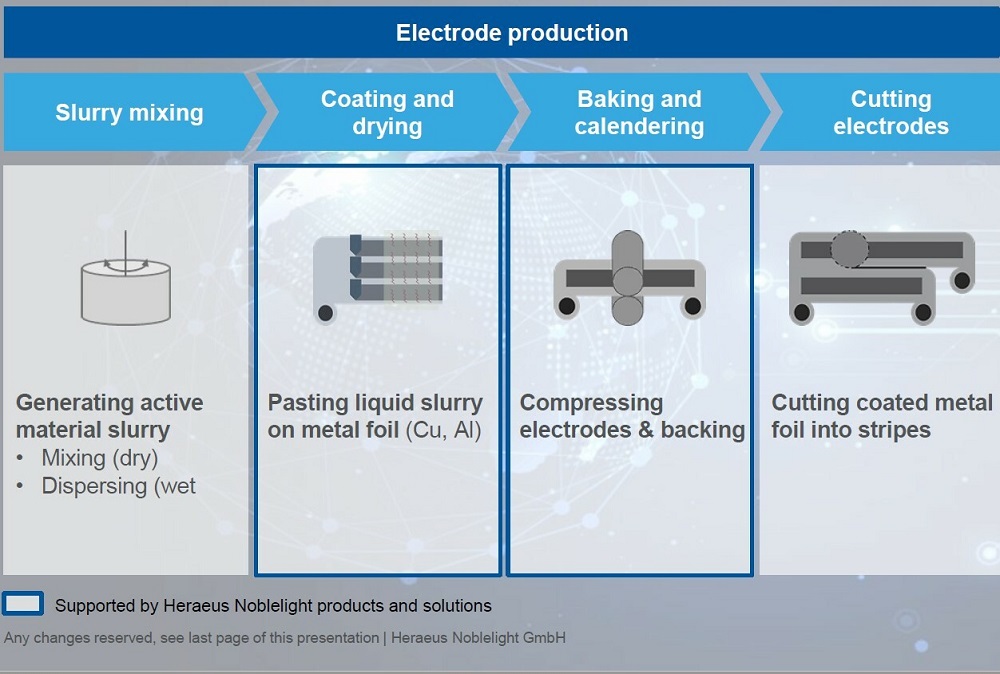GAITHERSBURG, MD, 12. January 2023
Infrared Process Improves EV Battery Quality, Increases Production Rates 80%
Battery manufacturers can produce next-generation Lithium-ion batteries using CIR emitters to dry electrode slurry to supplement convection ovens
Heraeus Noblelight, a specialist for industrial light source solutions, announces field testing with their Carbon Infrared (CIR) technology shows significant quality and production improvement for drying electrode slurry, an important processing step during the production of Lithium-ion batteries such as those being used in electric vehicles. Field tests at customers showed electrode slurry drying is up to 80% faster with CIR emitters compared to convection oven drying. Additionally, both electrode conductivity and durability improved, significantly improving battery quality.
Faster electrode processing for Lithium-ion batteries
Lithium-ion batteries (LiB) are found in electric cars, scooters and many other modern means of transportation. Their production is booming and with it the manufacture of the necessary electrodes. The battery electrode manufacturing process is complex with multiple stages affecting the electrode characteristics and final LiB performance. These electrodes are metal foils, mostly made of copper or aluminum, coated with a paste called slurry. Typically a convection oven dries the electrode slurry at line speeds of 50 m/min. Tests showed that adding Heraeus Noblelight’s CIR emitters enabled line speeds to increase to 90 m/min, 80% faster than current production rates.
Longer lasting batteries
Furthermore, drying electrode slurry with CIR emitters resulted in better crosslinking and less residual moisture improving electrode conductivity and durability. The subsequent electrode baking and calendaring process can also benefit from CIR emitters by eliminating creasing and foil deformation. These higher quality electrodes mean the batteries should last longer.
Flexible options for LiB manufacturers – 80% faster or reduced floor space
As the pace of LiB manufacturing increases in North America, with many recent announcements for building production in the US, battery producers have the opportunity to choose faster production rates or smaller footprint ovens.
Tom Marrero, Heraeus Noblelight’s Manager, Battery Solutions explained, “With so many new battery production plants being announced for North America, battery producers should consider their options. If production rates are the priority, then they can choose to run 80% faster using CIR emitters. However, if the priority is facility cost reduction, then the battery producer can use the CIR emitters to reduce the oven size and resulting floor space and run production at current rates.”
Line integrators and oven manufacturers can differentiate their solutions
LiB oven manufacturers and those who integrate entire LiB production lines for battery OEMs can now differentiate their solution by offering their customers several options. For example, in addition to the typical convection oven for electrode slurry drying, now they can offer an oven with CIR emitters, or an option for a CIR booster oven prior to the convection oven.
Visit herae.us/battery for more details.


